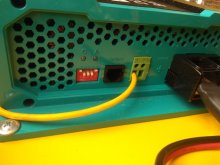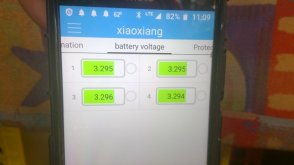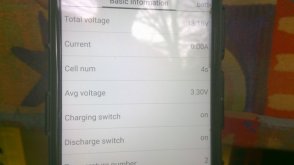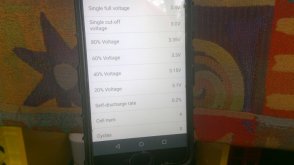Deryk_the_Gypsy
New Member
- Joined
- Jun 18, 2020
- Messages
- 25
After watching a bunch of will's video's I decided to make one for my 2010 transit connect camper conversion. I ordered the cell's from here https://pt.aliexpress.com/item/4000...m=a2g0o.store_home.promoteWysiwyg_515358087.3 I purchased the BMS from OverKill Solar.
Assembly was pretty straight forward.
I have a 2010 transit connect with 150 amp alternator. I have a renogy 50 amp dc to dc charger, 7gauge wire running from the isolator and main battery to the charger.
I have the android version of his app on my phone and I am having trouble getting the battery to charge. I open the app before I start the van and the charging voltage is too often 0 amps and it will go from .1 to 40 amps but with effort after an hour drive today I am at 30%. I only changed in the settings was for it being a 200 amp battery and 160 amps useable. I will admit I am disabled and don't drive a whole lot but I have at least 5 hours of highway time and I just can't seem to get it higher. The voltage is the same, I checked the battery and compared it to the app and they are the same. Whenever the car is running it shows as the battery is either at 200 amps or 199 sometimes the center display that shows remaining watts/how long is always wrong, usually showing under 2400 but sometimes as high as 5k to go.
Yesterday when I came home from another 45 minutes on the highway for 7 hours everytime I checked the app the battery was at 100% around 8pm when I went out it showed it at 30%. 13.22 volts
Any ideas? I was planning on adding 200 watts of solar on the roof in the spring when I add a 12 volt compressor fridge but just can't seem to get the battery charged. Friday I have a 100 some mile trip and tuesday will be returning so I would like to see the battery getting topped off after 2 months.
Assembly was pretty straight forward.
I have a 2010 transit connect with 150 amp alternator. I have a renogy 50 amp dc to dc charger, 7gauge wire running from the isolator and main battery to the charger.
I have the android version of his app on my phone and I am having trouble getting the battery to charge. I open the app before I start the van and the charging voltage is too often 0 amps and it will go from .1 to 40 amps but with effort after an hour drive today I am at 30%. I only changed in the settings was for it being a 200 amp battery and 160 amps useable. I will admit I am disabled and don't drive a whole lot but I have at least 5 hours of highway time and I just can't seem to get it higher. The voltage is the same, I checked the battery and compared it to the app and they are the same. Whenever the car is running it shows as the battery is either at 200 amps or 199 sometimes the center display that shows remaining watts/how long is always wrong, usually showing under 2400 but sometimes as high as 5k to go.
Yesterday when I came home from another 45 minutes on the highway for 7 hours everytime I checked the app the battery was at 100% around 8pm when I went out it showed it at 30%. 13.22 volts
Any ideas? I was planning on adding 200 watts of solar on the roof in the spring when I add a 12 volt compressor fridge but just can't seem to get the battery charged. Friday I have a 100 some mile trip and tuesday will be returning so I would like to see the battery getting topped off after 2 months.











